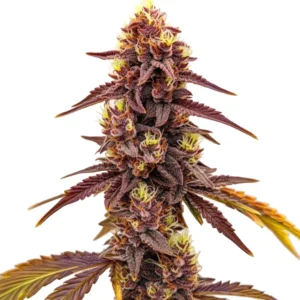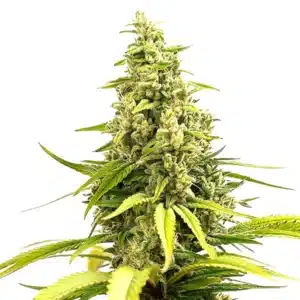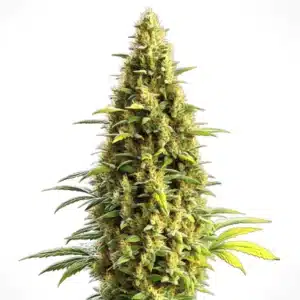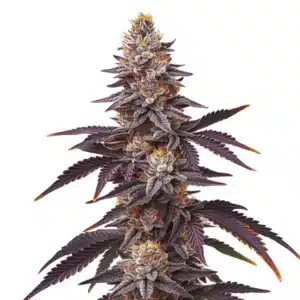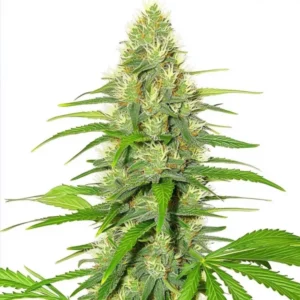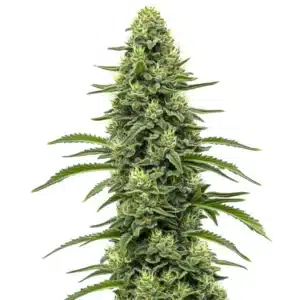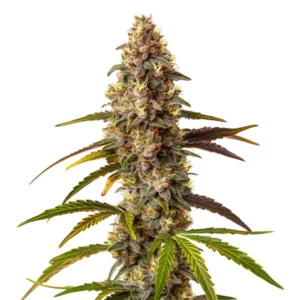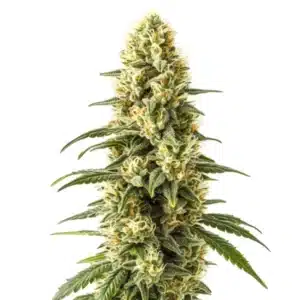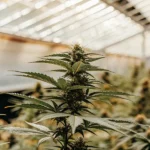
How do Laticifers Contribute to Pest Resistance in Cannabis Plants?
Laticifers are specialized cells or tubes in plants that produce latex, a milky fluid. In cannabis plants, this latex serves as a natural defense mechanism against pests. When pests attempt to feed on the plant, the latex can gum up their mouthparts, deterring them from continuing their attack. How do laticifers contribute to pest resistance in cannabis plants? They create this natural barrier, which plays a significant role in enhancing cannabis pest resistance and keeping your plants safe from various threats.
The presence of laticifers in cannabis acts as a first line of defense. This sticky, sometimes toxic substance can trap small insects, making it difficult for them to move or feed. It’s a bit like a natural pest control system built into the plant. By knowing how laticifers contribute to pest resistance in cannabis plants, growers can appreciate the natural defenses their plants already have, reducing the need for chemical pesticides.
Recommended Strains
Blue Dream
-
THC: 17% - 24%
-
Type of seed: Feminized
-
Phenotype: 50% Sativa / 50% Indica
-
Flavor: Berry, Blueberry, Mango, Sweet
-
Day to flower: 8 - 10 weeks
Gorilla Glue 4
-
THC: 27%
-
Type of seed: Feminized
-
Phenotype: 60% Sativa / 40% Indica
-
Flavor: Fruity, Pine, Spicy
-
Day to flower: 8 - 10 weeks
For those interested in strains that might exhibit strong pest resistance due to laticifers, check out varieties like Blue Dream from Blimburn Seeds. This strain is known for its resilience, making it a favorite among growers seeking robust plants that can withstand pest pressures naturally.
Laticifers Role in Cannabis Pest Resistance
Laticifers play an essential part in the cannabis plant’s defense strategy. These structures are not just passive defenders; they actively deter pests through their physical and chemical properties. The latex they produce is often bitter or toxic, which discourages pests from feeding on the plant.
When pests such as aphids or caterpillars try to munch on cannabis leaves, they encounter the sticky latex. This substance can disable them by blocking their feeding parts. The effectiveness of laticifers in pest resistance is one of the reasons why cannabis plants can thrive in various environments. For instance, the Gorilla Glue 4 strain is renowned for its hardy nature, partly due to the presence of laticifers.
Knowing the laticifers role in cannabis pest resistance helps breeders focus on enhancing these structures in new strains. By doing so, they can develop varieties that are more resilient to pests and environmental stressors. This approach not only benefits individual growers but also contributes to sustainable agriculture practices.
Incorporating laticifers role in cannabis pest resistance into breeding programs could help create plants that require fewer interventions, leading to eco-friendly cultivation. This method highlights the importance of natural plant defenses and their potential in reducing agricultural reliance on synthetic chemicals.
Laticifers Impact on Cannabis Plant Defense
Besides deterring pests directly, laticifers impact cannabis plant defense by triggering other protective responses. When a plant is attacked, the damage can stimulate the production of more latex, enhancing the plant’s defense capabilities. This response ensures that the plant can better withstand repeated pest attacks over time.
The latex acts as a signal to other parts of the plant, indicating an attack is underway. This signaling can lead to the production of secondary metabolites, which are compounds that further deter pests. Strains like White Widow are examples of cannabis plants that benefit from such multi-faceted defense strategies.
The laticifers impact on cannabis plant defense is multifaceted, influencing both immediate and systemic responses. This intricate network of defense mechanisms underscores the evolutionary sophistication of cannabis plants in their natural habitats.
Moreover, how do laticifers contribute to pest resistance in cannabis plants by providing a continuous line of defense? They ensure that even if one mechanism is bypassed, others remain active, offering a comprehensive shield against a variety of pest threats.
Promos & Deals
Cannabis Laticifers and Pest Deterrence
One of the key ways cannabis laticifers deter pests is through the physical properties of latex. The sticky nature of this substance makes it difficult for pests to move. Think of it as nature’s glue trap. Once an insect is caught in the latex, it’s often game over for the pest.
Besides to its physical deterrence, the chemical properties of latex can’t be overlooked. The compounds within latex can be toxic to certain pests, disrupting their feeding and reproduction. This dual action makes laticifers a powerful tool in maintaining healthy cannabis plants.
The effectiveness of cannabis laticifers and pest deterrence lies in this dual approach, targeting both the physical and biochemical vulnerabilities of pests. This dual nature makes laticifers an invaluable component of a plant’s defense system.
Knowing the dynamics of cannabis laticifers and pest deterrence allows growers to better manage their crops. By selecting strains with high laticifer activity, they can naturally reduce pest pressures and support healthier plant growth.
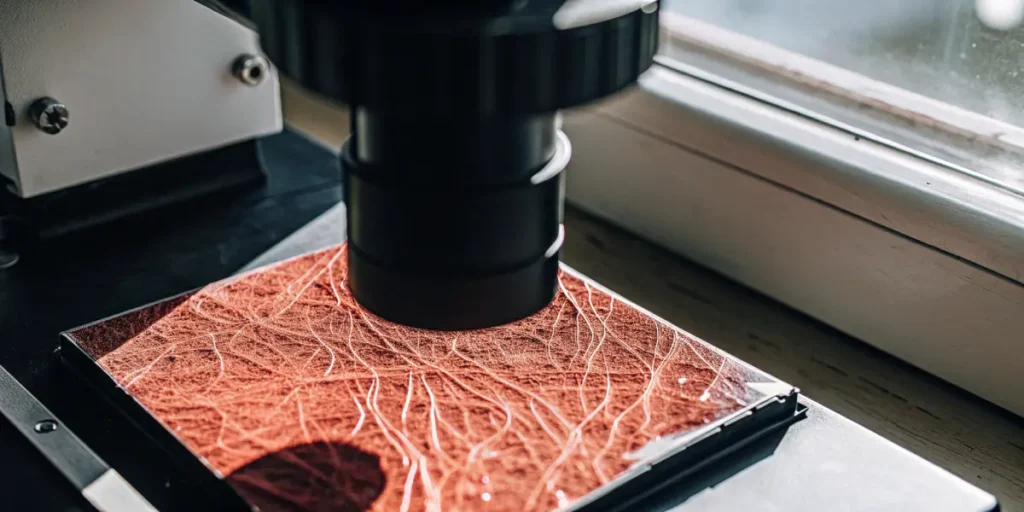
How Laticifers Enhance Cannabis Pest Resistance
The enhancement of pest resistance through laticifers is a natural process that cannabis plants have perfected over time. By producing latex, these plants can fend off numerous pest species without human intervention. This natural resistance is a significant advantage for growers looking to maintain organic cultivation practices.
- Reduces the need for chemical pesticides.
- Promotes a healthier growing environment.
- Decreases pest-related crop damage.
For growers, selecting strains that exhibit strong laticifer activity can make a big difference. The presence of these structures means less work controlling pests and more focus on nurturing the plants. It’s a win-win situation for both the grower and the environment.
How laticifers enhance cannabis pest resistance is evident not just in pest deterrence but also in the overall health of the plant. By fostering a robust natural defense, growers can cultivate crops that are less susceptible to pest invasions and more adaptable to varying environmental conditions.
Additionally, knowing how laticifers enhance cannabis pest resistance can guide cultivation practices, encouraging growers to adopt methods that support natural plant defenses. This knowledge can be pivotal in achieving sustainable and successful harvests.
FAQs
Do all cannabis plants have laticifers?
Yes, most cannabis plants have laticifers, but the density and effectiveness can vary between strains. Some strains have been bred for enhanced pest resistance, which might include more active or abundant laticifers. It’s worth exploring different strains to find those that best suit your growing conditions and pest management needs.
While all cannabis plants possess some level of natural defense, choosing strains like Blue Dream, Gorilla Glue, or White Widow from Blimburn Seeds can offer enhanced protection due to their robust laticifer structures. These strains are known for their resilience against pests, thanks to their effective latex production.
Knowing the function of laticifers in cannabis pest resistance can inform breeders and growers alike. By focusing on strains that naturally exhibit strong laticifer activity, they can cultivate plants that are better equipped to handle pest pressures without additional inputs.
The genetic diversity in cannabis plants allows for a wide range of laticifer activity, offering growers various options in selecting strains that align with their cultivation goals and environmental constraints.
How do laticifers contribute to pest resistance in cannabis plants compared to chemical pesticides?
Laticifers provide a natural form of pest resistance, reducing the need for chemical pesticides. They offer a sustainable solution by deterring pests through physical and chemical means. Unlike synthetic pesticides, which can harm beneficial insects and the environment, laticifers target pests directly, preserving the ecosystem.
For growers interested in organic practices, relying on the natural defenses of laticifers can lead to healthier plants and a more environmentally friendly cultivation process. This approach not only protects your plants but also supports broader ecological health.
The comparison between laticifers and chemical pesticides highlights the advantages of natural plant defenses. By leveraging how laticifers enhance cannabis pest resistance, growers can maintain a balanced ecosystem while minimizing harmful impacts on non-target species.
Moreover, using laticifers as a primary pest defense aligns with sustainable agriculture goals, promoting biodiversity and reducing the chemical load in farming environments. This balance is crucial for long-term agricultural success and environmental stewardship.
Can laticifers be enhanced through cultivation techniques?
While laticifer production is largely genetic, certain cultivation techniques might enhance their effectiveness. Stressing the plant slightly, such as through pruning or controlled nutrient stress, can sometimes stimulate more latex production. However, it’s crucial to balance stress to avoid harming the plant.
Growers should focus on maintaining optimal growing conditions to support the plant’s natural defenses. Ensuring adequate nutrition, light, and water can help cannabis plants maximize their pest resistance capabilities through their laticifers.
By exploring how laticifers function in cannabis pest protection, growers can adopt practices that naturally boost these structures. Techniques like selective pruning or adjusting nutrient profiles can enhance laticifer activity, further strengthening plant defenses.
It’s important to understand that while cultivation techniques can influence laticifer production, the underlying genetic potential remains a significant factor. Therefore, selecting the right strains is just as important as the cultivation methods employed.
Are there any downsides to relying on laticifers for pest resistance?
Relying solely on laticifers for pest resistance might not be sufficient for all pest threats, especially in large-scale operations. While effective for small pests, larger pests or those not deterred by latex may require additional management strategies. Combining natural defenses with other integrated pest management practices can offer comprehensive protection.
It’s also important to ensure that plants are otherwise healthy, as stressed or unhealthy plants may not produce latex as effectively. Regular monitoring and a holistic approach to plant health will ensure that laticifers can function optimally.
The limitations of relying solely on laticifers underscore the need for integrated pest management strategies. While they offer significant benefits, balancing their use with other methods ensures comprehensive protection and minimizes risks.
Incorporating a diverse range of pest management tactics not only complements the laticifers impact on cannabis plant defense but also promotes a more resilient and productive cultivation system.
How can I identify if laticifers are working effectively in my cannabis plants?
Observing your plants regularly can offer clues about the effectiveness of laticifers. If you notice fewer pests or reduced pest damage, it could indicate that the laticifers are doing their job. You might also see pests trapped in the latex, a direct sign of their deterrent effect.
Monitoring plant health and pest levels can provide insights into how well your plants are defending themselves. If problems persist, it might be worth exploring additional pest management strategies or choosing strains known for their strong natural defenses.
Knowing how laticifers contribute to pest resistance in cannabis plants involves regularly assessing their activity. Visual inspections and keeping records of pest populations can help determine the effectiveness of laticifers.
Keeping an eye on plant health and potential stress factors also plays a role in ensuring that laticifers remain active and efficient in their protective role. This proactive approach can help maintain a healthy and productive growing environment.



